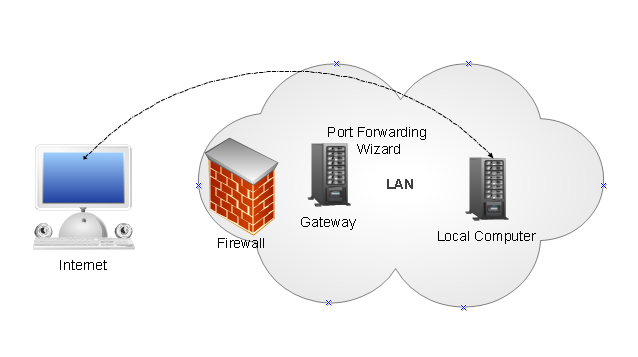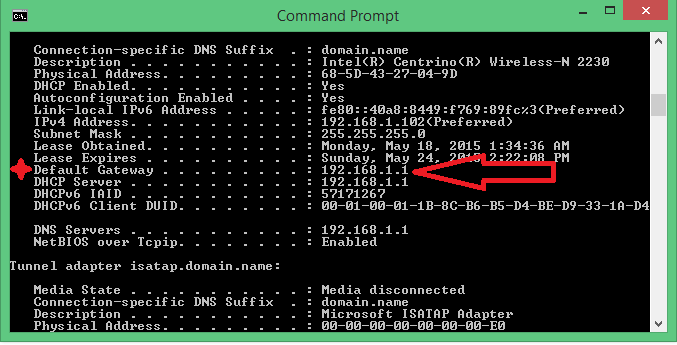Let’s define port forwarding before clarifying how to configure port forwarding on router.

What is port forwarding?
Port forwarding or port mapping as in a computer networking is an application of NAT “network address translation” which receives a communication request and redirects it from one address and port number combination to another during the packets are bypassing a network gateway.
Port forwarding is commonly used to allow services on the internal network “protected” to be available to hosts on the opposite side of the network gateway “external network” by forwarding or remapping the destination IP address and port number of the connection to an internal host.
Why do you need to configure port forwarding on a router?
As a port forwarding technique opens specific ports on your home network or even if in your small business network to the internet, which is usually prevented from access by your router.
You may need to configure port forwarding on router to allow servers, games, BitTorrent client, and other applications to work through the natural security of your router that otherwise prevent connection to these ports.
Apply the following steps regardless your operating system to configure port forwarding on router:
- Open your web browser; in the URL bar in the top of the page enter your router’s IP address to open your router’s configuration page. It is commonly one of these ones “192.168.0.1”, “192.168.1.1”, or “192.168.2.1”.
If you do not know what your router’s IP address it, here is a method to know how to figure out it.
For Windows:
Open the command prompt and enter “ipconfig /all”.
Your router’s IP address is often the same as the default gateway.

For Mac:
Open the terminal and enter “netstat -nr”.
For Linux:
Open the terminal and enter “route”.
- Enter your username and password. If you have changed before; enter the username and password you chose.
If not, you can enter the following common and default logins:
For Linksys routers:
Type (admin) for both of the username and the password
For NETGEAR routers:
Also type (admin) for both of the username and the password
As for other routers: do not type anything in the username field, and type (admin) in the password field.
You can visit websites such as “RouterPasswords.com” and enter your router’s model to know the default login for it.
You can reset the login from the reset button from your router, you can configure it online.
- After you logged in, tap on port forwarding section to configure port forwarding on router.
Of course there is a difference between each router and another such as the interface of them. So here are the common labels: Port Forwarding, Applications, Gaming, and Virtual Services.
If you do not find Port Forwarding section to configure port forwarding on router, you can tap on Advanced Settings and look for Port Forwarding subsection.
- A lot of routers have a drop-down menu with preconfigured options for famous software programs, if you want to configure port forwarding on router for a specific application, choose it from the list.
- If you do not find the program you want to add in the list, you will resort to a custom configure port forwarding on router. You will find a slightly difference to get this done even if the required information is the same for any router.
Enter the name of the service; you may type a name which related to the software program so that you can distinguish what the entry is for.
Select the type of the service; it maybe TCP, UDP, or both according to what the program you are unbanning it. If you are not sure, choose the TCP/UDP option.
Now you will insert the port you want to configure port forwarding on router. Select the one you prefer to use. If you want one port to open type the same number in the start and the end field. But if you want to put a specific port range (4 for example), type 3784: 3787.
Insert the internal IP address to refer the port forwarding to. This is the IP address of the computer running the program that you are unblocking.
- Save your settings. Click on Save or Apply according to your router. You may need to restart your router to configure port forwarding on router successfully.
Important guides to find your internal IP address:
How to find Internal IP for Windows to configure port forwarding on router?
Basically there is a difference between the IP address and the internal IP address; if your PC is connected to a network, then it is assigned to the IP address. If your PC is connected to a network as well as the internet, then the PC is assigned to an internal IP address which marks its location on the local network, and an external IP address which is the IP address of your internet connection.
There is more than a method to do it; we will take one of them.
Using a search engine to find your Public IP address:
- Open Google or Bing to find your external or public IP address which will be the IP address of your router or modem that can be seen by the rest of the internet.
- In the search field type “IP address”, press “Enter”. This command helps you to find your Public IP address. You can use Google, Bing, Ask, and other search engines.
- Find your IP address, you will find it in the top results of the search or in its own box.
Your public IP address will take a form of four groups of up to three numbers, separated by periods. For example, it might look like 199.27.79.192.
Most external IP addresses are dynamic, which means they change from time to time.
How to find the internal IP address for Mac to configure port forwarding on router? (OS X 10.5 and Newer)
The matter looks like the same as Windows; there are four methods to figure out your Internal IP address.
- Open the Apple menu by clicking on the icon on the upper-left corner of the screen.
- Scroll down and choose System Preferences.
- Tap on Network section
- Select your connection; you will be connected to either to a Wireless connection “AirPort” or a wired connection “Ethernet”. Your used connection will appear “connected” next to it.
Beneath your connection status, you will find your Internal IP address, in smaller print.


